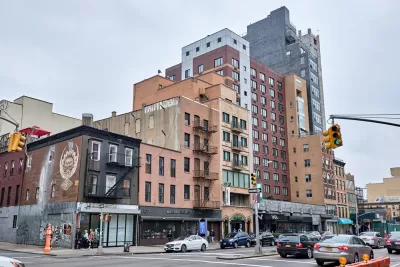A new metric for measuring land use regulation traces the evolution of land use regulations over the past decade, finding that U.S. municipalities on a net basis adopted slightly more restrictive land use regulations from 2006 to 2018.

New analysis published by the National Bureau of Economic Research reports results of a new survey of local residential land use regulatory regimes for over 2,450 primarily suburban communities across the United States.
The paywalled research, authored by Joseph Gorko, Jonathan Hartey, and Jacob Krimmel, locates the most highly regulated markets on the two coasts, "with the San Francisco and New York City metropolitan areas being the most highly regulated according to our metric," according to the abstract for the paper.
The remainder of the abstract reads as follows:
Comparing our new data to that from a previous survey finds that the housing bust associated with the Great Recession did not lead any major market that previously was highly regulated to reverse course and deregulate to any significant extent. Moreover, regulation in most large coastal markets increased over time.
John Hartley shared more findings from the study, titled " The Local Residential Land Use Regulatory Environment Across U.S. Housing Markets: Evidence from a New Wharton Index," on a Twitter thread.
My latest working paper in @nberpubs w/ @jkrimmel and Joe Gyourko on how zoning/land use regs have changed since the Great Recession: “The Local Residential Land Use Regulatory Environment Across U.S. Housing Markets: Evidence from a New Wharton Index” https://t.co/h1ZHawXp9d pic.twitter.com/k5yRCeisYJ
— Jon Hartley (@Jon_Hartley_) December 23, 2019

Planetizen Federal Action Tracker
A weekly monitor of how Trump’s orders and actions are impacting planners and planning in America.

Congressman Proposes Bill to Rename DC Metro “Trump Train”
The Make Autorail Great Again Act would withhold federal funding to the system until the Washington Metropolitan Area Transit Authority (WMATA), rebrands as the Washington Metropolitan Authority for Greater Access (WMAGA).

The Simple Legislative Tool Transforming Vacant Downtowns
In California, Michigan and Georgia, an easy win is bringing dollars — and delight — back to city centers.

The States Losing Rural Delivery Rooms at an Alarming Pace
In some states, as few as 9% of rural hospitals still deliver babies. As a result, rising pre-term births, no adequate pre-term care and "harrowing" close calls are a growing reality.

The Small South Asian Republic Going all in on EVs
Thanks to one simple policy change less than five years ago, 65% of new cars in this Himalayan country are now electric.

DC Backpedals on Bike Lane Protection, Swaps Barriers for Paint
Citing aesthetic concerns, the city is removing the concrete barriers and flexposts that once separated Arizona Avenue cyclists from motor vehicles.
Urban Design for Planners 1: Software Tools
This six-course series explores essential urban design concepts using open source software and equips planners with the tools they need to participate fully in the urban design process.
Planning for Universal Design
Learn the tools for implementing Universal Design in planning regulations.
Smith Gee Studio
City of Charlotte
City of Camden Redevelopment Agency
City of Astoria
Transportation Research & Education Center (TREC) at Portland State University
US High Speed Rail Association
City of Camden Redevelopment Agency
Municipality of Princeton (NJ)





























